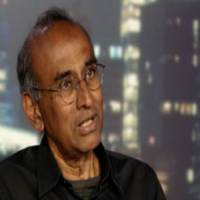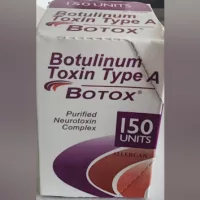
smolaw11/iStockBy MEREDITH DELISO, ABC News
(NEW YORK) — What are schools going to look like when they reopen this year?
It’s a complicated question with few answers at this point: for some, there might be plastic guards on desks, hand sanitizer stations in every classroom, masks on students and staff and physically distanced seating.
Another one of those potential measures comes when students arrive at the door — symptom checks. The health screenings, including temperature checks, have already become a common protocol in reopening businesses in the U.S., as well as for schools abroad.
But how do schools conduct those checks for hundreds, if not thousands of students in a safe and timely fashion?
As some of the country’s K-12 classrooms gear up for reopening in-person, they’re proposing a variety of health screening protocols, as well as re-envisioning their entrances to accommodate the demanding logistics of these new processes.
This is all while the value of the health screenings remains uncertain and gaps exist in the knowledge of how the disease is spread, specifically among children.
“The challenge of orienting students and parents and faculty to new routines and rituals, and just being clear about the who, what, where, when and how of how learning will happen, is tremendously hard,” Eric Tucker, co-founder of Brooklyn Laboratory Charter Schools (LAB) in New York City, told ABC News. “We need to explain clearly and simply and with a level of simplicity so that there’s clarity about what the expectations are.”
A question of feasibility
While some authorities recommend the screenings for schools, they also note how difficult they will be to implement.
For instance, the American Academy of Pediatrics recommends that schools have policies for symptom screening, which is used to help identify symptomatic people, but says that temperature checks “must balance the practicality” of doing them for students and staff, including possible lost instructional time.
The Centers for Disease Control and Prevention (CDC) noted temperature screenings are “not helpful” in identifying students with COVID-19 who are asymptomatic or presymptomatic. COVID-19 symptoms also overlap with other illnesses, it said, making it hard to screen, particularly in young children.
The agency currently does not recommend that schools conduct screenings of all students in grades K-12, and for schools that are considering them to weigh their feasibility. It does recommend that businesses consider daily in-person or virtual health checks of employees.
New York City’s schools chancellor has likened the symptom-checking process to a “TSA check-in at an airport” — one that can take a lot of time and manpower, particularly for the city’s larger schools.
“How do you efficiently do that?” Richard Carranza said during a virtual family and student information session last month, before adding that they are working with school administration to “flesh out” what that might look like. “We understand that that’s important as well,” he added. The city has yet to announce more details on temperature checks, and notes on its website that schools will create entry protocols, such as symptom checks, “consistent with the latest health guidance.”
Implementation of temperature checks will vary widely across the country, as there’s no consensus among state school reopening plans on symptom screenings. An analysis of nearly two dozen state guidelines found that they range from requiring them for all staff and students to recommending that schools consider them or conduct “where feasible,” to encouraging health assessments before arrival to ultimately referring districts to local health department requirements.
Some schools will find temperature checks a “burden,” ABC News contributor John Brownstein, PhD, an infectious disease expert at Boston Children’s Hospital and professor at Harvard Medical School, acknowledged. But since not everyone will be capable of “good self-assessment,” we need “broad policies to do temperature checks to identify those that have been infected,” he said. Since temperature checks won’t be able to identify pre-symptomatic transmission, other measures, like having students in cohorts, become important in reopening schools, he said.
Screening at home instead
Given the logistics, some protocols may rely on students to be primarily screened at home for COVID-19 symptoms. The CDC recommends that “parents or caregivers should be strongly encouraged to monitor their children for signs of infectious illness every day.” Students should stay home, it advises, until at least 24 hours after they no longer have a fever (temperature of 100.4 or higher) or signs of a fever, such as chills or flushed appearance, while unmedicated. The AAP also notes that temperature checks and symptom screening at home may be unreliable, but the “most practical and likely to identify the most ill children who should not be in school.”
In New York state, current guidance from the governor’s office requires schools to perform health checks and screenings, per state Department of Health guidance, including temperature checks. It notes that screening by caretakers before school is “preferred” to doing so at arrival. Illinois’ school plan requires that schools conduct symptom screenings and temperature checks — or that people self-assess before entering school buildings.
In its proposal for reopening, Philadelphia’s school district requires that guardians, students and staff conduct a daily self-screen at home before going to school or work, including taking temperatures and monitoring a list of symptoms. The protocol won’t be implemented for at least several months; after initially announcing a hybrid start to the fall, the district will be starting fully remote, with plans to revisit a hybrid model for mid-November.
School screenings so far
Some of the first school districts to reopen in-person this school year have implemented temperature checks, along with social distancing measures, as part of their arrival process.
At Alcoa, south of Knoxville, Tennessee, temperature checks with touchless thermometers are being deployed, and the number of students in school each day is limited.
At Corinth, in northeast Mississippi, the school district has seven thermal scanners across its elementary, middle and high schools.
“We thought because of the efficiency and accuracy of what we saw, that it was a worthwhile investment,” Corinth Superintendent Lee Childress told ABC News.
At Corinth, students are screened 6 feet apart upon arrival, with separate entrances for those arriving by bus and by car, Childress said. A second, mid-morning scanning is also performed for students in pre-K through eighth grade to catch any latent fevers. The school is also keeping seating charts and other logs to help with contact tracing.
The school district established its protocols based on guidelines from the CDC, state health department and American Academy of Pediatrics, a school spokesperson said.
Corinth reopened on July 27, with families choosing either fully remote or in-person learning. About 82% of the district’s 2,700 students chose in-person, Childress said.
Since reopening, Corinth has had to contend with several cases of the coronavirus. By Tuesday morning, the district had notified the public of five confirmed cases of COVID-19 in high school students. None were identified by the health screenings, a school district spokesperson said, but were reported by parents to the school nurses.
Those who have been in close contact with the students are quarantining for 14 days from their last point of contact, the school district said.
Rethinking arrival
In planning to reopen its doors later this month, Brooklyn LAB anticipated that performing symptom and temperature checks while also keeping its middle and high school students 6 feet apart would take time and space — most of it spent outdoors in the elements. To that end, the school has reimagined its arrival process and environment.
“Our concern was that if the process was disorderly, if we just pretended that surrounding the front door there was enough space for a structured and orderly arrival, that it’s kind of like walking into a grocery store that has no signage on the floor and no intentionality about how to maintain social distancing,” Tucker said. “Most schools have not yet adjusted their physical infrastructure to account for what entry will actually entail.”
The school is erecting a transparent scaffolding, dubbed the “front porch,” that features signage on safety measures, flower planters and, when needed, heaters. The structure, which was made in collaboration with Urban Projects Collaborative, serves as an outdoor lobby. Students will be able to wait there while staff checks them in, conducting safety measures such as mask checks, hand sanitizer application, cellphone disinfection and temperature checks.
“It’s important that there be places for social distancing and screening of students for symptoms to occur in a way that’s pleasant and dry and warm and safe,” Tucker said.
The school is currently training teachers on its new CDC- and NYC DOE-guided protocols and plans to start having students in the building on Aug. 19, when they can practice the new normal as well.
To decrease the on-campus population to get to 10-person classes, Brooklyn LAB plans to have staggered start times, with parents able to elect a four-hour in-person block in the morning or afternoon, and virtual learning the rest of the day. It anticipates having 800 students in person, and another 270 fully virtual.
To decrease the arrival waiting time, the school is exploring doing some of the checks before students leave home, as well as an app format, Tricia Forrest, project manager at Urban Projects Collaborative, told ABC News.
“Our ultimate goal is coming up with solutions that are grounded in science recommendations as much as feasible, given how people use spaces and buildings,” she said, “and having solutions that will guarantee safety for our children as much as possible.”
Copyright © 2020, ABC Audio. All rights reserved.















